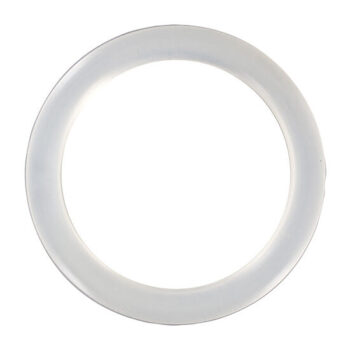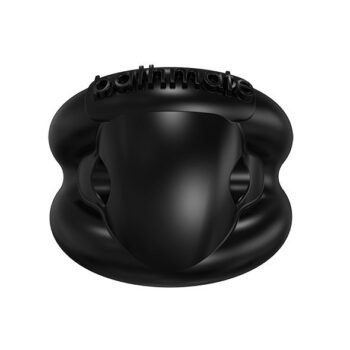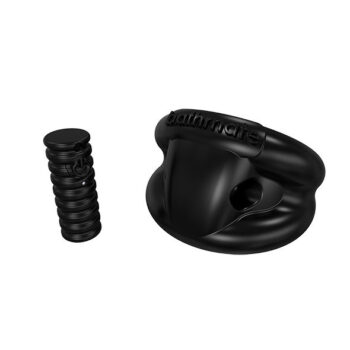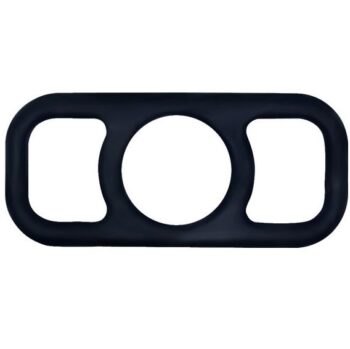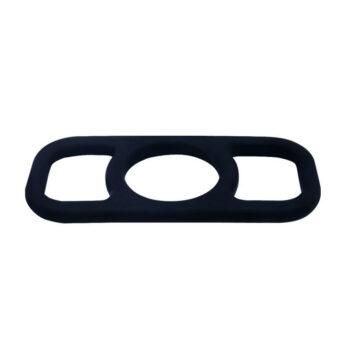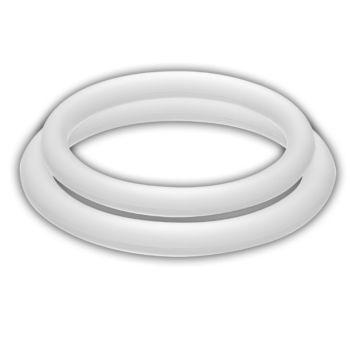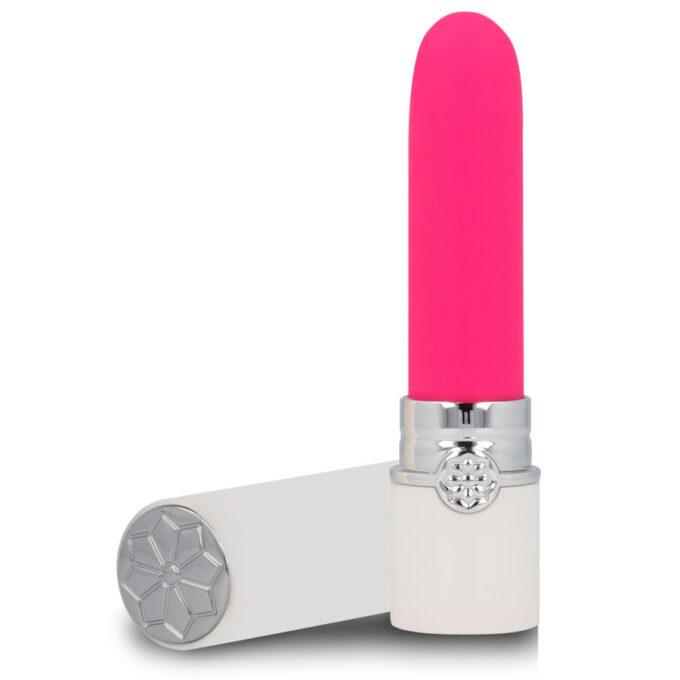


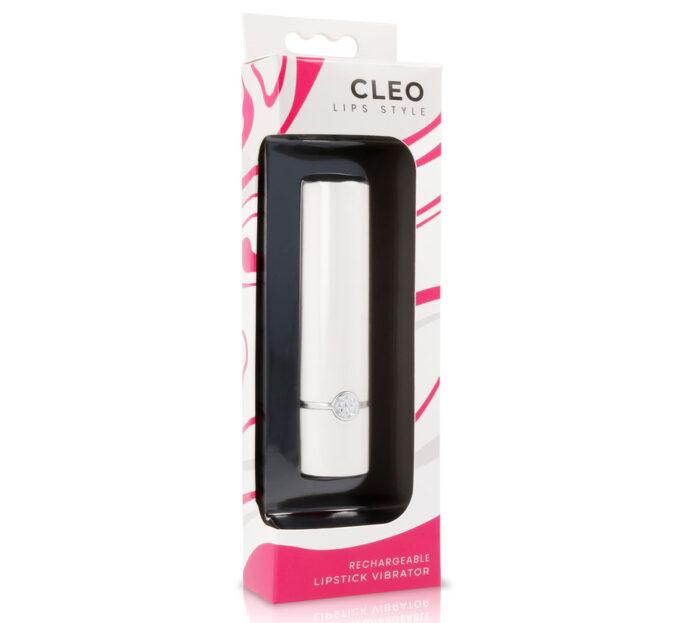

LIPS STYLE – BATOM VIBRATÓRIO CLEO

LIPS STYLE – BATOM VIBRATÓRIO CLEO
Descrição
Agora a marca LYPS STIYLE é lançada com um batom vibratório de qualidade, com 10 incríveis modos de vibração, envolto em silicone antialérgico suave e sedoso. Agora o batom não é apenas um símbolo de feminilidade, mas também um símbolo de prazer, a evolução e a história resultaram no raciocínio e na liberdade das mulheres, o prazer acima de tudo é o bem-estar, por isso ESTILO LYPS é inspirado na história do batom feminino, e em homenagem aos seus 100 anos de história surge o melhor batom vibrado para a mulher de hoje!
- Silicone antialérgico
- Recarregável USB incluído
- 10 padrões de vibração
- 1 motor
- Poderoso e silencioso
- Bateria de íon de lítio
- Fácil de limpar
Embora sua criação possa ser ainda mais antiga se os pigmentos usados pela cultura egípcia e grega forem levados em consideração, o batom como o conhecemos está em seu primeiro século e continua sendo um símbolo complexo da feminilidade.
Há uma mulher que não carregue batom na bolsa? Pode ser, embora seja inegável que esta peça seja o símbolo da beleza feminina e um ícone da cultura popular. O batom tem 100 anos e continua sendo o produto de maquiagem mais vendido, com quase 1 bilhão de unidades em todo o mundo.
A história do batom pode ser ainda mais antiga se a composição primária das mulheres nos tempos antigos for levada em consideração. Em parte do Egito, alguns pigmentos naturais funcionaram como a base da maquiagem atual. As ceras foram fundidas para dar certas cores que eram usadas nos olhos e na boca, mas em princípio só eram permitidas para a classe social aristocrática. (Leia também E daí se as mulheres quiserem usar maquiagem?)
Na Grécia, as mulheres pintaram os lábios para indicar que eram prostitutas, enquanto em Roma as mulheres da classe alta o fizeram.
Os antigos faraós e reis também usavam maquiagem, embora isso estivesse longe de ser uma questão de vaidade, para eles a maquiagem estava relacionada à alienação dos espíritos e com propriedades medicinais. Por exemplo, eles atribuíram propriedades para remover o mau-olhado ou para representar a força de seus ancestrais.
Mas a revolução viria em 1915 das mãos do fabricante americano Maurice Levy. Com a ideia de facilitar a aplicação e eliminar o incômodo processo de precisar de uma escova – que paradoxalmente está de volta à moda hoje – Levy e outros fabricantes pensaram que a solução era uma apresentação mais simples e higiênica.
Depois de muitas tentativas, Levy criou um bálsamo em forma de bastão, a princípio um pouco trêmulo, mas que mais tarde se tornou o produto que vemos hoje. Em suma, ela surgiu com um batom preso a uma plataforma – que escorregava à medida que o batom passava – e que ficava dentro de um tubo de metal com tampa. Desta forma, a barra tornou-se reutilizável.
Voilá, algo tão simples é ainda hoje o produto por excelência e um símbolo complexo da feminilidade. Amado pela maioria, mas submetido ao escrutínio dos mais radicais que o marcam como um objeto opressor, machista, provocador e tremendamente sexual, o batom, no entanto, continua no mercado da beleza.
?O batom é percebido como um objeto de consumo e de cuidado pessoal aceito em um ambiente onde a modernidade é desejada e o sucesso profissional predomina como objetivo de vida (…) Mas não devemos esquecer a função primordial da maquiagem, que é criar uma ilusão visual.
Modifica temporariamente o rosto e, portanto, a maneira como seus usuários se apresentam aos outros ?, como descreve um estudo da Universidade Católica do Peru denominado 'Batom: identidade, apresentação e vivências de feminilidade'.
-Vermelho paixão-
Essa pesquisa também sugere que certas cores acentuam essas práticas machistas. A cor vermelha dos lábios sempre teve uma conotação eminentemente sexual.
?Os elementos que identificam a feminilidade podem ser subestimados, mas contêm discursos e saberes que nos dizem sobre o que significa para a sociedade não só ser mulher, mas alcançar uma determinada imagem ideal. A indústria cosmética joga com esses valores simbólicos?, indica o texto.
O casamento da maquiagem e da publicidade provavelmente deu origem a uma das armas mais fortes de difusão em massa de todos os tempos. De revistas, mídias e agora redes sociais, o ideal de perfeição, de moda, de tendência, o ideal de ser mulher, homem, criança, homossexual, é potencializado por apresentações constantes de modelos dessa vida.
O batom teve um papel importante em momentos importantes da história. Além de ser também um elemento para o teatro, por exemplo, foi um produto comercializado por Elisabeth Arden durante a Segunda Guerra Mundial em uma campanha chamada ?A campanha como dever? para tentar amenizar a crise que o mundo vivia.
INFORMAÇÃO DO PRODUTO:
- Comprimento total: 10,2 cm
- Diâmetro: 2,5 cm
- Peso: 45 gr
- Material: Silicone
- Cor da caixa: Branco e rosa
- Resistente à água: Sim
- Bateria: Sim, recarregável por USB
Informações adicionais
| Peso | 100 g |
|---|---|
| Dimensões (C x L x A) | 32.00 × 65.00 × 210.00 mm |

